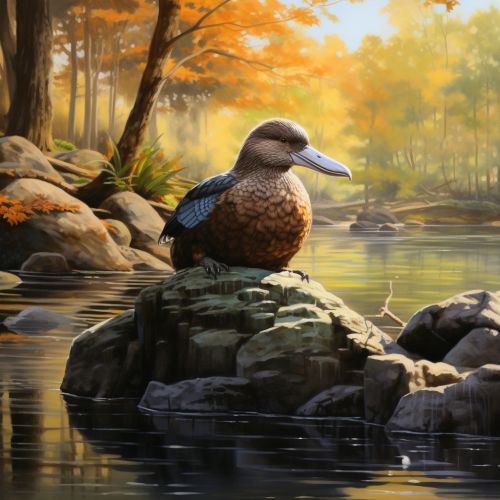Monotremes
Introduction
Monotremes are a group of mammals that lay eggs instead of giving birth to live young. They are one of the three main groups of living mammals, along with placentals (Placentalia) and marsupials (Marsupialia). The monotremes are typified by structural differences in their brains, jaws, digestive tract, reproductive tract, and other body parts compared to the more common mammalian types. However, they are mammals in that they have fur and produce milk.


Taxonomy and Evolution
Monotremes include just five extant species: the platypus and four species of echidna (or spiny anteater). They represent the oldest and most primitive form of mammals, having evolved around 220 million years ago during the Triassic period. The name "monotreme" comes from the Greek words for "single hole," referring to the single duct for their urinary, defecatory, and reproductive systems.
Anatomy and Physiology
Monotremes have a unique combination of reptilian and mammalian characteristics. Like reptiles, they have a single cloaca. However, like mammals, they have fur and produce milk to feed their young. The milk is secreted through the skin in the area of the mammary glands and is lapped up by the young, as monotremes lack nipples.
Monotremes have a lower body temperature than other mammals, and their metabolic rate is only about 70% that of placentals and marsupials. They also have extra bones in the shoulder girdle, including an interclavicle, which is not found in other mammals. Monotremes' jaws are constructed differently from those of other mammals, and the jaw opening muscle is different. As in all mammals, the tiny bones that conduct sound in the middle ear are fully incorporated into the skull, rather than lying in the jaw as in cynodonts and other premammalian synapsids.
Reproduction and Development
Monotremes are the only mammals that lay eggs. The female has a single ventral opening, the cloaca, which serves for the passage of both eggs and waste products. The eggs are small, about the size of a grape, and are covered in a shell, as in birds and reptiles. The female incubates them by curling around them.
The young, called puggles in informal language, are born very immature and helpless. The mother protects and feeds them until they are old enough to fend for themselves. The platypus mother stays with her eggs and young in a burrow, while the echidna mother carries her eggs and young in a temporary pouch.
Conservation Status and Threats
Monotremes are protected by law in all countries where they occur. The platypus and the short-beaked echidna are not considered threatened. However, the three species of long-beaked echidna, found only in New Guinea, are listed as either endangered or critically endangered. The main threats to these species are habitat loss, hunting, and possibly climate change.
